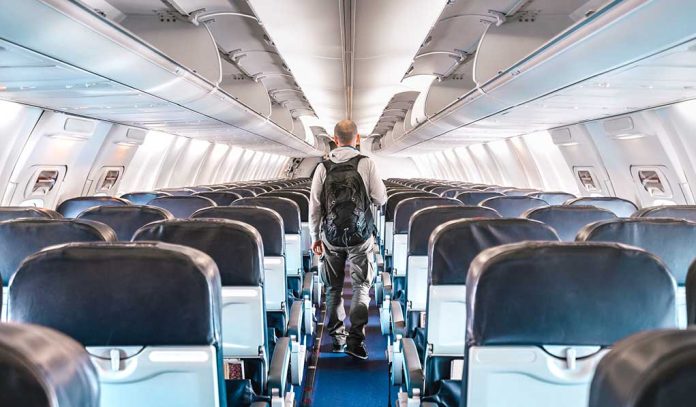
Newark Airport’s air traffic control radio systems suffer yet another outage as Transportation Secretary Sean Duffy points directly to the Biden administration’s neglect of critical infrastructure while announcing plans for a complete overhaul of America’s outdated systems.
Key Takeaways
- The FAA confirmed another critical radio frequency outage at Newark Liberty International Airport, one of several recent technical failures creating safety concerns.
- Newark’s air traffic control is severely understaffed with only 24 certified controllers out of a targeted 38, a situation worsened after five controllers took trauma leave following an April incident.
- Transportation Secretary Sean Duffy blamed the previous Biden administration for neglecting preventative safety measures and announced plans for a “brand new, state-of-the-art air traffic control system.”
- The FAA acknowledges that similar telecommunications failures could occur nationwide due to outdated systems, with most of its limited capital budget maintaining legacy technology rather than implementing modern solutions.
Mounting Technical Failures at Newark Airport
The Federal Aviation Administration (FAA) is investigating a troubling series of radio frequency outages at Newark Liberty International Airport, with the latest incident creating a two-second communications blackout. This outage follows a more significant failure on April 28 that forced multiple flights to divert to alternative airports. The recurring technical problems highlight deep structural issues within America’s air traffic control infrastructure that have been building for years while remaining largely unaddressed by the previous administration.
These failures are not isolated incidents but symptoms of a nationwide crisis in air traffic control reliability. Newark has experienced multiple telecommunications outages in recent months, prompting the FAA to convene an emergency task force. The situation has become so dire that control of Newark’s airspace was transferred to Philadelphia last year in an attempt to address the cascading problems of staffing shortages and system congestion. This patchwork solution has proven insufficient as the underlying infrastructure continues to deteriorate.
🇺🇸 FAA: 4TH OUTAGE AT NEWARK AIRPORT—PLANES SAFE, NERVES FRAYED
The FAA has confirmed yet another system outage—number 4, if you’re keeping score—at the facility guiding planes in and out of Newark Liberty International.
At 11:35 a.m., the Philadelphia control tower dropped… https://t.co/o4DJLZ3EHz pic.twitter.com/k6FIg6vlwh
— Mario Nawfal (@MarioNawfal) May 19, 2025
Staffing Crisis Compounds Technical Problems
Newark’s air traffic control system is operating at critically low staffing levels, with only 24 certified controllers out of a targeted 38 positions filled. The situation worsened significantly after five controllers took 45-day trauma leave following the severe April outage, creating a perfect storm of technical and personnel deficiencies. This mirrors a national problem, as the FAA currently employs approximately 3,500 air traffic controllers, well below the targeted staffing levels needed to maintain safe and efficient operations across the country’s airspace.
“The airport clearly is unable to handle the current level of scheduled operations,” the FAA stated, acknowledging the severity of the situation at Newark Airport.
The staffing shortage has forced the FAA to implement ground delays at Newark and consider temporary flight reductions. The agency has been meeting with major U.S. airlines “to find a balance between reducing their operations at the airport and meeting the needs of each individual airline.” This stopgap measure reflects the agency’s desperate attempts to maintain safety standards while operating with severely limited resources and outdated equipment inherited from the previous administration.
Trump Administration Tackles Legacy of Neglect
Transportation Secretary Sean Duffy has been forthright in his assessment of the crisis, placing blame squarely on the previous administration’s failure to invest in critical infrastructure. In a statement addressing the Newark outages, Duffy highlighted the stark contrast between the past administration’s approach and President Trump’s commitment to rebuilding America’s crumbling infrastructure. The Secretary has called for tens of billions of dollars to be invested in a completely new air traffic control system.
“Under President Trump, America is building again. Today we are seizing a once-in-a-generation opportunity to build a brand new, state-of-the-art air traffic control system,” said by Sean Duffy, Transportation Secretary.
Duffy directly criticized the leadership failures that led to the current crisis, stating, “Maybe when you work from home, or maybe when you work from Michigan as a secretary, maybe you’re not focused on the real issues that are taking place throughout the airspace.” The secretary’s comments point to a fundamental shift in leadership approach, with the Trump administration prioritizing hands-on management of critical infrastructure rather than the remote governance style that characterized the previous administration’s handling of transportation issues.
A National System in Crisis
The problems at Newark represent just the visible tip of a much larger national crisis. The U.S. air traffic control system relies on outdated facilities, obsolete technology, and faces chronic staffing shortages that create serious safety concerns. Recent incidents, including a midair collision and nationwide flight groundings, underscore the urgency of addressing these systemic failures. The situation has deteriorated to the point where entering American airspace “is like time travel for pilots,” according to industry analyst Scott McCartney.
“We could see other situations like this around the country because the system is old,” Duffy warned, acknowledging the nationwide implications of the Newark failures.
The FAA’s capital budget has decreased over time, with most funds directed toward maintaining legacy systems rather than investing in modern technologies. This approach has created a dangerous technological debt that the Trump administration is now working to address through comprehensive reform. While a software update has been installed to prevent further radio outages at Newark, this represents only a minor fix to an air traffic control system that requires fundamental restructuring to meet the demands of modern aviation.



